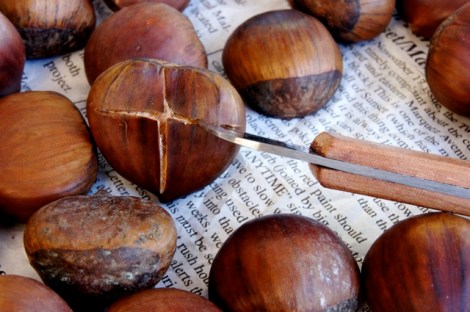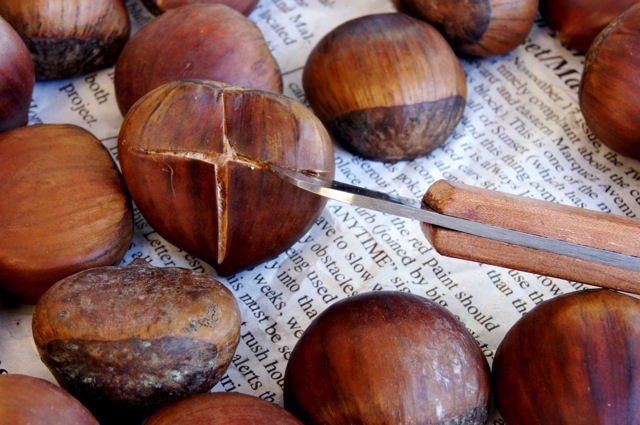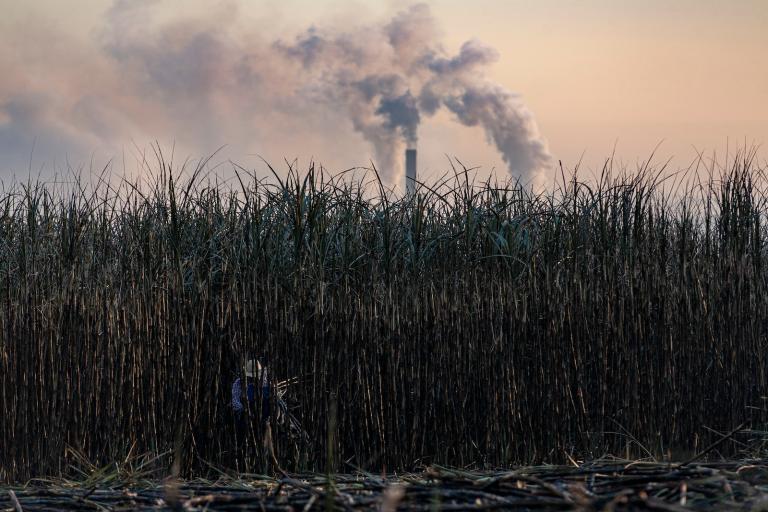When Nat King Cole first recorded “The Christmas Song (Chestnuts Roasting on an Open Fire)” in 1946, American giant chestnut trees had been nearly wiped out by a foreign fungus. Billions of native trees were felled by the disease. If you want to roast those sweet babies over an open fire this holiday season, they’ll likely be of the imported-from-China variety.

A hundred years ago, it was a very different scene, NPR reports:
The American chestnut was king of the forest. One of every four hardwoods in the eastern woodlands was a chestnut. They grew so tall — up to 100 feet — they were called the redwoods of the east.
By the mid-20th century they were “pretty much obliterated,” and now the only seasonal street-food treats are those crusty sugared peanuts. An American tragedy.
Efforts to revitalize the country’s chestnut stock have been ongoing for decades, but they’re not just aimed at holiday treats (because researchers have other crazy priorities).
Why is it so important to bring back the chestnut tree? Advocates say the trees were critical to the economy of rural communities and the ecology of the forests. Some even say chestnuts can help with global warming.
“Some” being scientists, like the ones who penned a 2009 Purdue University study on new hybrid chestnut trees and their carbon-fighting superpowers.
“Maintaining or increasing forest cover has been identified as an important way to slow climate change,” said [associate professor of forestry Douglass] Jacobs, whose paper was published in the June issue of the journal Forest Ecology and Management. “The American chestnut is an incredibly fast-growing tree. Generally the faster a tree grows, the more carbon it is able to sequester. And when these trees are harvested and processed, the carbon can be stored in the hardwood products for decades, maybe longer.”
Over the last several years, we’ve been importing more foreign chestnuts, but we’re also growing more of them at home. American growers have been planting and cultivating a variety of chestnut trees, from European-Japanese hybrids to blight-resistant Chinese varieties. They’re creating new stock and marketing it with new products aimed at the health-conscious. From NPR’s The Salt blog:
Many growers hand harvest to serve a niche, regional market, but they hope to modernize with grabbing tools called nut wizards and vacuum and all-in-one self-propelling harvesting systems. On the processing side, anti-microbial treatments help improve chestnut’s short shelf life. “It’s like an apple, if you leave them on a table they’ll go crummy,” says Dan Guyer, an engineer at [Michigan State University] who’s experimenting with X-ray chestnut sorting technology.
And then there are new marketing strategies. Chestnut flour is aimed at the gluten free crowd, but there’s also chestnut honey and beer. MSU helped develop peeled-frozen chestnut packs, hoping to appeal to the shopper on the go.
In Missouri, [University of Missouri forestry professor Michael] Gold likens it to selling a novel exotic fruit in U.S. markets for the first time: “We see our role as the catalyst in developing what we call the ‘new’ chestnut, as a new crop for American palates.”
Who needs an open fire when you can warm up with chestnut brew?



